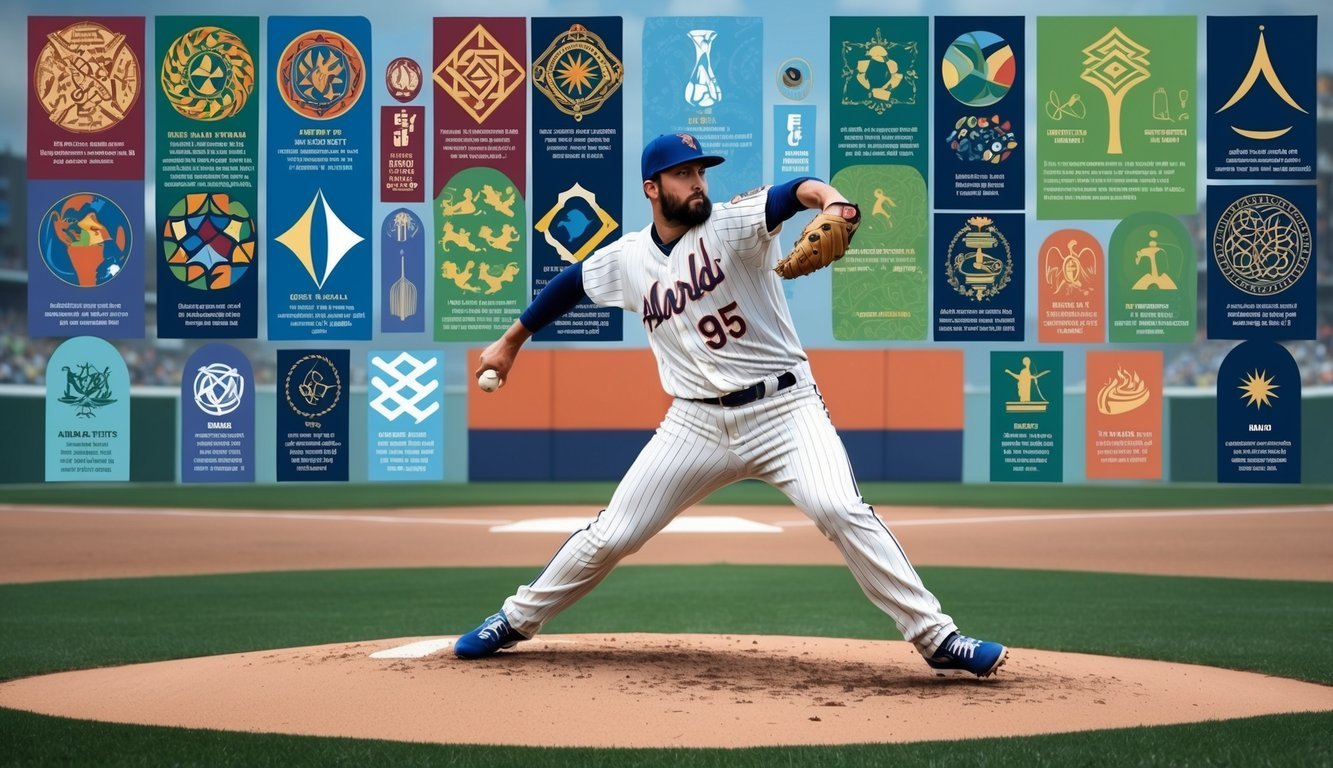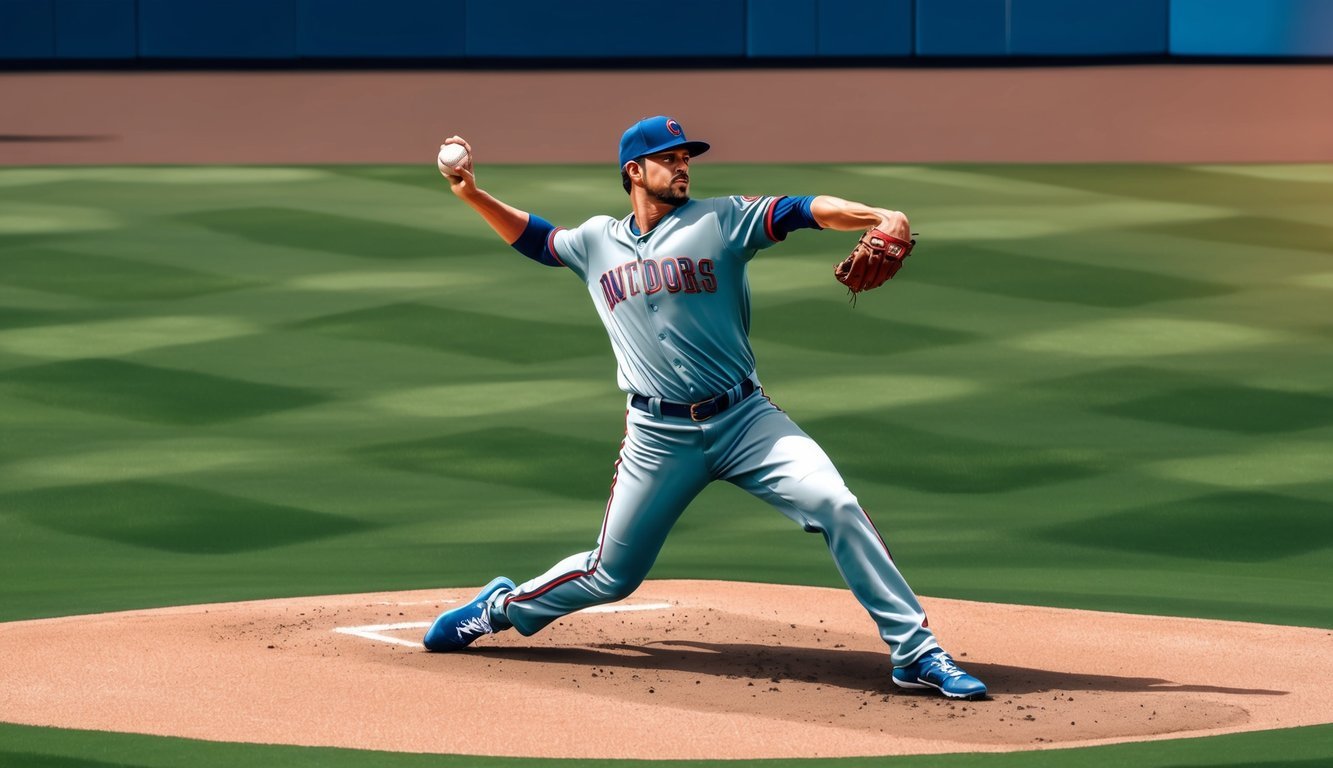Baseball fans are always on the lookout for unique talents that can give their team an edge.
One of the rarest and most intriguing skills in the sport is the ability to pitch with both arms.
Ambidextrous pitchers are a fascinating anomaly in baseball, capable of throwing from either side of the mound with impressive velocity and control.
Ambidextrous pitchers can throw effectively with both their left and right arms.
They often reach speeds over 90 mph from each side.
This remarkable ability allows them to adapt to different batters and situations, potentially giving their team a significant advantage.
While switch-hitters are relatively common in baseball, switch-pitchers are exceedingly rare.
One notable example of this extraordinary talent is Jurrangelo Cijntje, a sophomore at Mississippi State University.
Cijntje can throw up to 99 mph with his right arm and 95 mph with his left, showcasing the potential impact of ambidextrous pitching at high levels of play.
As more young players develop this skill, baseball fans may see an increase in these versatile pitchers in the coming years.
Understanding Ambidexterity in Pitching
Ambidextrous pitchers possess a unique skill in baseball, able to throw effectively with both arms.
This rare ability offers strategic advantages and challenges conventional approaches to the game.
What Makes a Pitcher Ambidextrous
An ambidextrous pitcher, also known as a switch-pitcher, can throw competitively with both arms.
This skill requires exceptional coordination and years of practice.
Jurrangelo Cijntje, a Mississippi State sophomore, exemplifies this talent.
He throws 99 mph right-handed and 95 mph left-handed.
Ambidextrous pitchers often use specialized gloves.
Pat Venditte, a former MLB player, used a custom six-fingered glove made in Japan since age 7.
The ability to pitch with either arm gives these players a unique edge.
They can adjust their approach based on the batter’s weaknesses or switch arms to reduce fatigue.
History of Ambidextrous Pitchers
Ambidextrous pitching has a long history in baseball.
Tony Mullane, known as “The Apollo of the Box,” was one of the earliest recorded switch-pitchers in the 1880s.
Other notable ambidextrous pitchers include:
- Larry Corcoran
- Elton Chamberlain
- George Wheeler
In recent years, Pat Venditte became the first ambidextrous pitcher in modern MLB history when he debuted in 2015.
He played for five teams over six seasons.
Greg Harris, who pitched in the 1980s and 1990s, was naturally ambidextrous but was only allowed to pitch right-handed until his final game.
In that game, he threw with both arms.
The “Pat Venditte Rule” was introduced to address switch-pitching.
It requires ambidextrous pitchers to choose an arm before the batter steps up to the plate.
Physical and Technique Aspects
Ambidextrous pitchers possess unique abilities that set them apart on the baseball diamond.
Their rare skill allows them to throw with both arms, presenting intriguing challenges and opportunities.
Benefits and Challenges
Ambidextrous pitchers enjoy several advantages.
They can switch arms to match up against batters, giving them an edge in pitch selection and batter confusion.
This versatility allows them to pitch longer in games and recover faster between appearances.
However, these pitchers face unique challenges.
Maintaining consistent mechanics with both arms requires extra practice and focus.
They must also develop pitch repertoires for each arm, essentially doubling their workload.
Fatigue management becomes crucial, as overuse of one arm can impact the other.
Balancing strength and flexibility between arms is an ongoing process for these special athletes.
Pitching Mechanics and Adaptations
Ambidextrous pitchers must master two distinct sets of mechanics.
This includes different arm slots, release points, and follow-throughs for each side.
Adapting to these changes mid-game requires exceptional body awareness and muscle memory.
Many develop slightly different pitch arsenals for each arm.
A pitcher might throw a powerful fastball and slider right-handed, while featuring a curveball and changeup left-handed.
This variety keeps batters guessing and expands the pitcher’s strategic options.
Footwork on the mound also differs depending on which arm is used.
Pitchers must practice smooth transitions when switching arms to maintain their rhythm and timing.
Equipment Specifics for Ambidextrous Pitchers
Custom gloves are essential for ambidextrous pitchers.
These special gloves have six fingers and can be worn on either hand, allowing quick switches between pitching arms.
The design enables pitchers to field with the same glove regardless of which arm they’re using.
Some ambidextrous pitchers use different sized or weighted baseballs when training each arm.
This helps address any natural strength imbalances and ensures consistent development.
Pitching sleeves and compression garments are often tailored to support both arms equally.
This gear helps maintain proper blood flow and reduces fatigue during long outings or frequent appearances.
Ambidextrous Pitching in Practice

Ambidextrous pitchers bring a unique advantage to the mound, able to throw with both arms and adapt to different batters.
This rare skill requires dedication, specialized training, and strategic use in game situations.
Notable Players and Their Career Highlights
Jurrangelo Cijntje of Mississippi State stands out as a remarkable ambidextrous pitcher.
He can reach 99 mph with his right arm and 95 mph with his left.
This versatility makes him a formidable opponent on the mound.
Pat Venditte made history in 2015 as the first true switch-pitcher in the major leagues in 20 years.
He faced over 1,100 batters with the side advantage during his career, showcasing the strategic benefit of ambidextrous pitching.
The Negro Leagues also saw their share of ambidextrous pitchers, though their stories are less well-documented.
These players paved the way for modern switch-pitchers.
Training for Ambidextrous Pitching
Developing ambidextrous skills often starts young.
Many switch-pitchers begin practicing with both arms in Little League or even earlier.
Specialized training focuses on building strength and coordination in both arms.
Pitchers work on mirroring techniques between their dominant and non-dominant sides.
High schoolers interested in switch-pitching may attend showcases like the MLB Draft Combine to demonstrate their skills.
Colleges like Louisiana-Monroe have shown interest in recruiting ambidextrous talents.
The Role of Ambidextrous Pitchers in a Team
Switch-pitchers offer managers flexibility in game strategy.
They can adapt to different batters without the need for a pitching change.
Teams may use ambidextrous pitchers to eat up innings in long games or as specialists in certain matchups.
Their ability to throw from both sides can be particularly valuable in extra-inning situations.
While rare, ambidextrous pitchers can be game-changers.
They keep batters guessing and provide a unique tactical advantage that traditional pitchers can’t match.
Cultural Impact and Rules

Ambidextrous pitchers have fascinated baseball fans and challenged the sport’s conventions.
Their unique abilities have led to rule changes and captured the public’s imagination.
The Venditte Rule and Its Implications
The Venditte Rule, named after switch-pitcher Pat Venditte, was introduced to address the complexities of ambidextrous pitching.
It states that a pitcher must declare which arm they’ll use before facing each batter.
This rule prevents an endless standoff between a switch-pitcher and a switch-hitter.
The rule has implications for strategy.
It limits the platoon advantage typically enjoyed by switch-hitters.
Teams now have to think carefully about their lineup when facing an ambidextrous pitcher.
The Oakland Athletics, who debuted Venditte in the majors, played a key role in bringing this rule to the forefront of baseball discussions.
Ambidextrous Pitchers in Popular Culture
Ambidextrous pitchers have captured the public’s imagination, appearing in various forms of media.
They’ve been featured in baseball movies, documentaries, and even video games.
These rare athletes often become local celebrities, drawing fans to games just to witness their unique talent.
Their stories of determination and adaptability inspire young players.
Baseball cards featuring ambidextrous pitchers have become collectibles.
Some show the player with two gloves or in split images throwing with different arms.
Social media has helped spread awareness of these pitchers.
Viral videos of their performances have introduced casual fans to this fascinating aspect of baseball.
Facing an Ambidextrous Pitcher

Batters and managers face unique challenges when confronting a pitcher who can throw with both arms.
This rare skill requires special preparation and quick thinking to gain an advantage at the plate.
Batters must adjust their stance and strategy on the fly, often trying to anticipate which arm the pitcher will use for their next throw.
Furthermore, understanding the intricacies of different pitches, including the ‘forkball pitching technique explained‘, can provide crucial insights into the pitcher’s repertoire.
This added layer of complexity can keep the batter on their toes, making every pitch a potential game-changer.
Strategies for Batters
Batters must stay alert and adaptable when facing an ambidextrous pitcher.
They should watch for the pitcher’s glove placement, which indicates the throwing arm.
Switch-hitters have an edge, as they can adjust their stance based on the pitcher’s choice.
Practice against both left and right-handed pitches is crucial.
Pinch-hitters need to be ready for either arm.
Batters like Moxie Manuel and Tod Brynan have developed routines to quickly adjust their mindset between pitches.
Some batters focus on the pitcher’s release point rather than arm angle.
This helps them react to the ball’s trajectory regardless of which hand it comes from.
Strategies for Managers
Managers play a crucial role in preparing their team to face ambidextrous pitchers.
They often study video footage to identify patterns in arm selection.
This helps predict when a pitcher might switch arms during a game.
Lineup construction becomes even more important.
Managers may alternate left and right-handed hitters to force frequent arm changes, potentially tiring the pitcher.
They might also save strong opposite-hand hitters for key moments.
Some managers, like Ulysses Greene, have developed special signals to quickly communicate adjustments to batters.
They may also use pinch-hitters strategically to gain platoon advantages.
Managers must also consider the impact on their own pitchers.
Facing an ambidextrous pitcher can disrupt a team’s rhythm, so maintaining focus is key.
